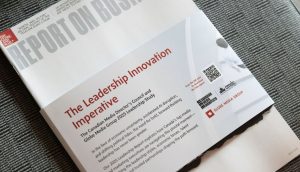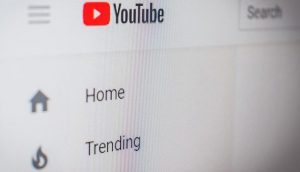Cathy Collier says she’s amazed at how quickly Canadian TV ratings provider Numeris is moving forward on its new cross-platform audience measurement solution.
“There’s been a lot of work that’s gone into it, and a lot of check marks to be checked,” said OMD CEO Collier, who also serves as the board chair for Numeris. Now, she’s gearing up for the first set of data (from Ontario) to be released next March, and the second set (from Quebec) in May. For how long the industry has waited for a measurement solution like this, she said, it now feels like it’s all happening at once.
“We as an industry have been saying that we need a single source of how people are consuming video, not just linear but online as well, for years,” she said. “It took us – broadcasters, advertisers and agencies – through Numeris to decide that we need to go forward and create this.”
It’s not an easy system to implement, said Collier. “Very few countries have actually introduced something like this.” There are three so far – Finland, Denmark and Norway.
After years of clamouring for a cross-platform solution – one that measured not just linear AMAs (like the ones released to MiC every week) but the audiences of those same shows as they’re broadcast online, on PVR and on the broadcasters’ proprietary SVODs – Numeris selected its partners for the project two weeks ago. Kantar Media and comScore will assist it with the panel recruitment stage of the project, taking it from proof-of-concept to activation. The bulk of their work will begin in October, while the summer will be for pre-implementation – finishing recruitment scripts, finalizing methodology and ordering equipment.
The panel recruitment stage will consist of “tagging” online video content so it can be monitored and measured by Numeris. Most broadcasters’ videos that are online are already tagged by comScore, Collier explained, so sticking with comScore made sense.
By March and May 2019, Numeris will get access to the view data of those online properties in Ontario and Quebec. Collier said the organization decided to start there since the broadcast industry has the biggest presence in those markets.
Looking at Denmark, Finland and Norway, Collier is confident Numeris will start seeing a very different picture of how many people are watching TV, and who’s watching the most. “In these other markets, the most significant interest is in the measurement of the younger audiences – they’re showing up more,” she said. In some areas, she said, when their measurement went from linear only, to linear and streaming, the difference was seven-fold.
Neil McEneaney, president and CEO of Numeris, told MiC the initiative will give Numeris members (advertisers, agencies and broadcasters) a more “holistic” view of audiences.
“When you’re looking at a show like Big Bang Theory, what you’re traditionally seeing and what’s available today is, this many people watched Big Bang Theory on TV. Now, we can also tell you how many people watched on-demand, and how many people watched it eight to 28 days [after broadcast.]” Previously, Numeris only reported overnights and seven-day results.
McEneany added that different devices will also be major game changers. “There’s the thing that everybody wants, which they haven’t been able to get – unduplicated reach for distribution.”
Up until now, Numeris hasn’t been able to distinguish tablet from PC from mobile views and more, meaning if a person watched The Good Doctor on their television and then watched the same episode again on a tablet, the results would be skewed to show that viewer as two people. “That’s a key element that drives value if you’re going to segment audiences for monetization,” he said. Unduplicated audience data allows media companies and agencies to better understand audience behaviours as they pertain to certain shows.
Speaking from the perspective of an agency CEO, Collier added that getting a more accurate idea of who the agency is reaching will allow for more investment.
As the project forges forward, Collier said Numeris already has its eyes on the future.
Right now, she said, comScore is tagging long-form content – full episodes. In the future, however, short-form content will be added to the list. This could include episode clips, extra features, bonus videos and more. Collier said it’s an essential part of providing more value for partners, by giving them a full picture of who’s watching all of their content – not just episodes.
























